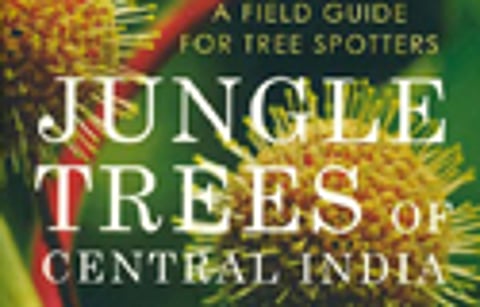
- Destinations
- Experiences
- Stay
- What's new
- Celebrating People
- Responsible Tourism
- CampaignsCampaigns
- SubscribeSubscribe
- Buy Now

This book is like a lot of household items handed down to us from traditional India a seamless combination of beauty and usefulness. Superbly concieved, wonderfully designed (by Kadambari Misra), with lucid text, abundant photographs, creative use of symbols, evocative illustrations, and hundreds of interesting tidbits, this has to be by far the best field guide to plants ever produced in India.
The book profiles 165 native tree species found in a broad territory covering much of Madhya Pradesh and parts of Maharashtra, Chhattisgarh, Rajasthan, and Uttar Pradesh. As a field guide, it focusses on what an interested lay person may easily be able to use for identification.
The preambular parts of the book are as delightful as the plates on trees. Beginning with a deeply intuitive and heartfelt preface, reflecting the feelings of a genuine tree-lover, the book moves on to describing the ecosystems, geology, and forestry history of central India. The sections describing parts of a tree and various aspects of how to identify trees, are extremely accessible to any lay person, perhaps reflecting Krishen&rsquos own journey as an &lsquoamateur&rsquo tree-lover. Difficult botanical jargon is avoided as far as possible. Some &lsquoasides&rsquo in this early part of the book include a fascinating explanation of why early leaves on lots of trees are red (we won&rsquot give away the mystery, read it for yourself).
For us, though, the most sumptuous and useful pages are the keys to flowers, barks, fruits, and leaves, profusely illustrated and arranged such that by using at least one of these parts, any tree should be possible to identify in the field. We cannot recall seeing such keys in any other book on Indian trees. For the scientifically inclined, there is a very interesting section on nomenclature at the back of the book.
The plates on the trees are clustered according to leaf shape, and the pages have a colour coding that shows even when the book is closed, so one can go straight to the section with trees of that leaf shape. Each tree gets one to two pages, with photographs or illustrations of all key parts, and a description that usually goes not only into the tree&rsquos diagnostic features but also into its local uses. To take photographs of trees that stand out even in the midst of the forest, and all their parts in various seasons, must have taken many thousands of hours walking through a vast territory. It is therefore remarkable that all but a handful of the hundreds of pictures are the author&rsquos.
The tree plate titles are the local name of each species, with the English and scientific ones given alongside. This and a description of their uses makes it possible to identify trees in the field if you happen to have a local person around, for such persons often know the local name and uses. A human figure (in various creative poses including some yogasanas) next to a silhouette of the tree on each plate also gives an immediate idea of the size.
